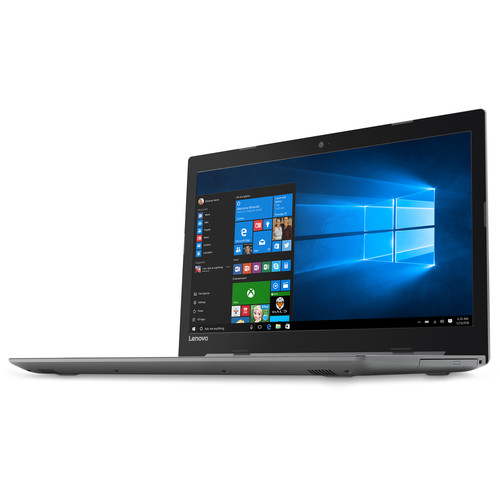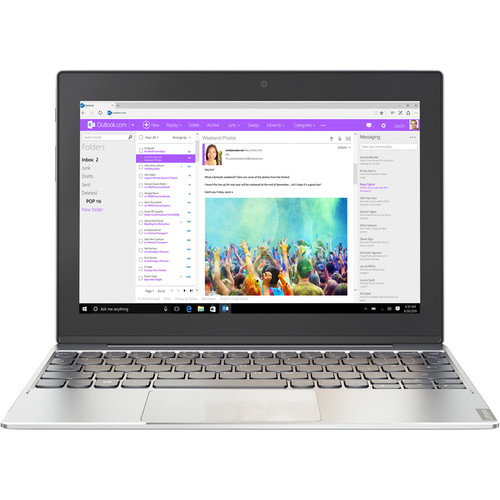Description
The 15.6″ Ideapad 320 Multi-Touch Notebook from Lenovo is a well-rounded system capable of handling everyday tasks such as browsing the Internet, streaming TV shows and movies, and video chatting with friends and family. Powered by a 2.5 GHz Intel Core i5-7200U dual-core processor and 8GB of DDR4 RAM, it can efficiently multitask and quickly access frequently used files and programs. For storing your documents, movies, and data, it has a 1TB 5400rpm hard drive. Should you need more space, you can connect external storage solutions using its multiple USB ports, as well as its 4-in-1 media card reader, which can also be used to quickly transfer files from mobile devices.
Its 15.6″ display, driven by integrated Intel HD graphics, has a 1366 x 768 display capable of delivering crisp, clear HD content. With touch capabilities, you can utilize touch gestures and commands within Windows 10 to enhance its accessibility and efficiency. An HDMI port lets you connect an additional monitor for better multitasking or larger viewing. Connect to the Internet via 802.11ac Wi-Fi or the Gigabit Ethernet jack. Pair compatible wireless peripherals using Bluetooth 4.1 technology to free up its USB ports for more important devices. Other integrated features include a webcam, speakers, a microphone, a SuperMulti DVD drive for reading and writing optical media, and a 3.5 mm mic and headphone combo jack.
Windows 10 Home
Start Menu
After its hiatus in Windows 8, the Start Menu has returned. Utilizing a combination of the traditional menu system and Windows 8’s Live Tiles, the improved Start Menu gives you more information at a glance, showing notification information alongside your applications and other pinned items.
Cortana
Microsoft’s digital personal assistant, Cortana, can answer your questions with information gleaned from both your device and the Internet at large. You can type or even talk with her, if your system has a microphone. Using her Notebook, Cortana keeps track of your needs and wants, and she learns over time to improve her information-gathering skills.
Microsoft Edge
After nearly 20 years, Microsoft has finally replaced its Internet Explorer web browser. With Microsoft Edge, users can write directly on web pages and share notes with friends and colleagues. It also improves the online reading experience by adding a distraction-free mode and read-it-later functionality. Edge also has built-in Cortana integration; you can have her help you find a restaurant, make a reservation, and pull up directions without leaving your browser.
Windows Store
For Windows 10, Microsoft has unified the Windows Store. Now, apps for PCs, tablets, and phones will all be accessible from one place. And with support for Universal Apps, one version of an app can work across all your compatible devices automatically.
Windows Continuum
Windows 10 was designed for a variety of screen sizes and input styles, and with its Continuum feature, it automatically adapts to fit your needs. A Windows 10 tablet on its own requires a touch-centric approach, but attaching a mouse and keyboard will shift everything to a more traditional interface. You can even attach an external monitor to your Windows 10 phone for a near-desktop experience. But it’s not just the operating system; Windows Universal Apps take advantage of Continuum as well.
Xbox on Windows 10
Gaming is a big focus of Windows 10. Xbox integration allows for PC players to match up against Xbox One players on supported games, and if you have an Xbox One, you can even stream compatible titles to your PC. Native support for recording with the new Game DVR feature makes it easy to capture and share your gameplay. The new DirectX12 takes better advantage of multi-core processors, giving games a performance boost, even on older hardware. Windows 10 also features native support for virtual reality headsets, such as the Oculus Rift.













